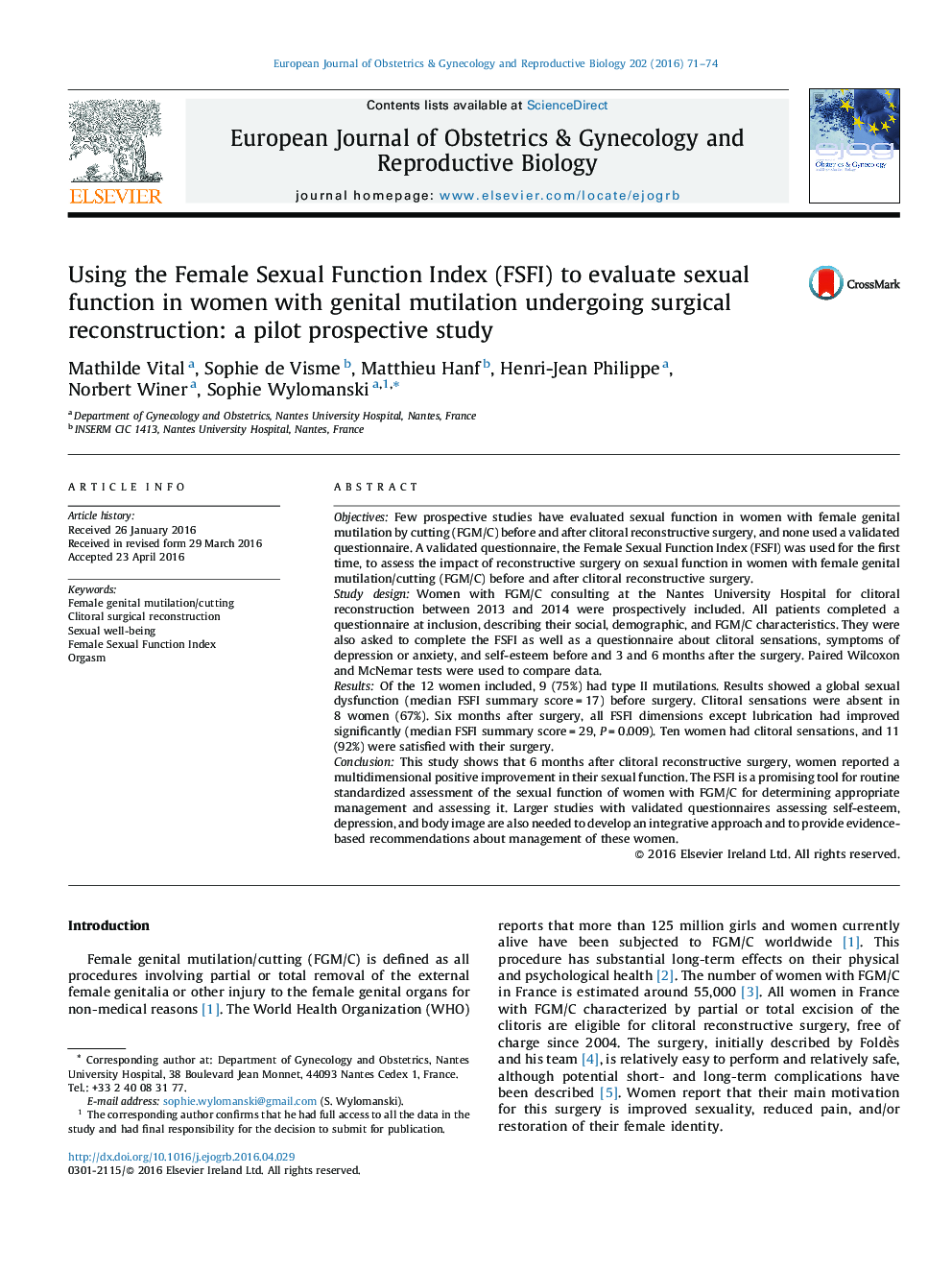| کد مقاله | کد نشریه | سال انتشار | مقاله انگلیسی | نسخه تمام متن |
|---|---|---|---|---|
| 3919216 | 1599779 | 2016 | 4 صفحه PDF | دانلود رایگان |
ObjectivesFew prospective studies have evaluated sexual function in women with female genital mutilation by cutting (FGM/C) before and after clitoral reconstructive surgery, and none used a validated questionnaire. A validated questionnaire, the Female Sexual Function Index (FSFI) was used for the first time, to assess the impact of reconstructive surgery on sexual function in women with female genital mutilation/cutting (FGM/C) before and after clitoral reconstructive surgery.Study designWomen with FGM/C consulting at the Nantes University Hospital for clitoral reconstruction between 2013 and 2014 were prospectively included. All patients completed a questionnaire at inclusion, describing their social, demographic, and FGM/C characteristics. They were also asked to complete the FSFI as well as a questionnaire about clitoral sensations, symptoms of depression or anxiety, and self-esteem before and 3 and 6 months after the surgery. Paired Wilcoxon and McNemar tests were used to compare data.ResultsOf the 12 women included, 9 (75%) had type II mutilations. Results showed a global sexual dysfunction (median FSFI summary score = 17) before surgery. Clitoral sensations were absent in 8 women (67%). Six months after surgery, all FSFI dimensions except lubrication had improved significantly (median FSFI summary score = 29, P = 0.009). Ten women had clitoral sensations, and 11 (92%) were satisfied with their surgery.ConclusionThis study shows that 6 months after clitoral reconstructive surgery, women reported a multidimensional positive improvement in their sexual function. The FSFI is a promising tool for routine standardized assessment of the sexual function of women with FGM/C for determining appropriate management and assessing it. Larger studies with validated questionnaires assessing self-esteem, depression, and body image are also needed to develop an integrative approach and to provide evidence-based recommendations about management of these women.
Journal: European Journal of Obstetrics & Gynecology and Reproductive Biology - Volume 202, July 2016, Pages 71–74
